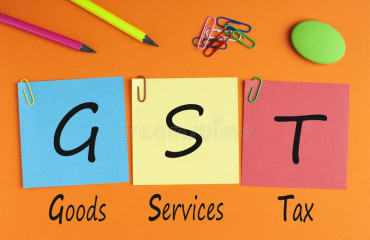
Generation of electronic permits for shipping goods within and across states in September moderated in tandem with softening factory orders but still remained one of the highest on record.
Generation of electronic permits for shipping goods within and across states in September moderated in tandem with softening factory orders but still remained one of the highest on record.
September's e-way bills came in at 92 million, compared with August's all-time high of 93.4 million, data from GSTN, the company that processes tax returns showed.
E-way bill generation has crossed 90 million-mark only twice before.
The moderation in e-way bill generation, a high-frequency indicator of economic activity, is in line with the mild signs of softening seen in manufacturing PMI and in railway freight in September.
Railway freight moderated 2.7% to 123.53 million tonnes in September from the month before, although it was a 6.7% improvement from the year-ago period.
S&P Global had said on Tuesday that goods producers in India saw a mild slowdown in output growth during September, citing its manufacturing purchase managers' index that was at a five-month low of 57.5 in September, although it was firmly above its long-run average of 53.9 and was signalling expansion.
A reading of 50 separates expansion from contraction.
Experts said that certain industries, especially consumer durables and automobiles that target festive sales tend to push products into the supply chain beginning August and that some moderation could be seen in the subsequent months.
E-way bills are a broad sign of consumption, inter-state trade and transportation of both raw materials and finished goods. Despite the slight moderation, the total number of e-way bills raised in September indicates to a great extent the increased compliance of GST rules as well as the formalization of the economy.
Since a lower threshold of ₹5 crore kicked in on 1 August for businesses to report wholesale transactions in designated portals (called e-invoicing), it is natural that compliance in raising e-way bills for goods shipment will also improve, according to experts.
The e-invoice transaction data feeds automatically into other tax documents like e-way bills and the GST returns, facilitating greater reporting and oversight of economic activity. The sustained increase in reporting requirements in the GST regime is seen as contributing to greater formalization of the economy and tax compliance.
GST proceeds of the Centre and states in October will reflect the sales achieved in September that, to some extent, gets reflected in the number of e-way bills raised in the month.
However, GST revenue collection cannot be precisely forecast as it is a function of the value of transactions, the different tax slabs and proceeds from services. GSTN does not release the value of e-way bills raised on a monthly basis.
"The number of e-way bills generated during a month, while being indicative of the trends, should ideally be accompanied by data on their value, which would be a more accurate barometer of production and consumption activities of goods across the economy," said M S Mani, a partner at Deloitte India.
The Centre and states together collected ₹1.62 trillion in GST in September, the fourth largest monthly collection so far under the new tax regime, showing a 10% annual growth from the year-ago period. This is broadly in line with the 10.5% nominal GDP growth projected for this year by the government. The expected monthly average receipt from the consumption tax for Centre and states this year is ₹
